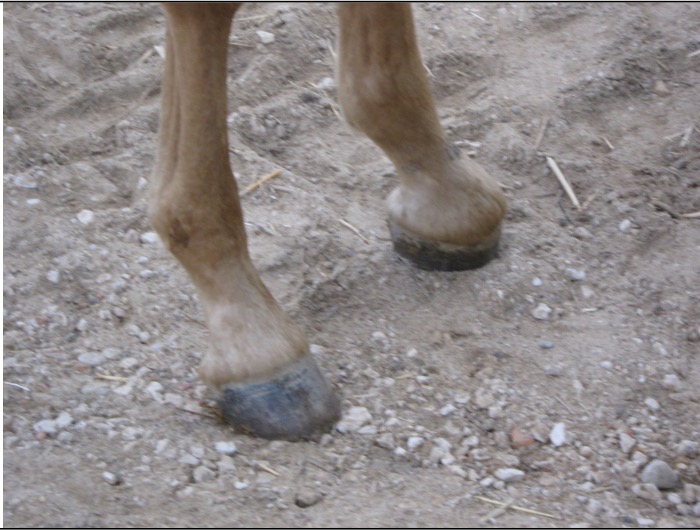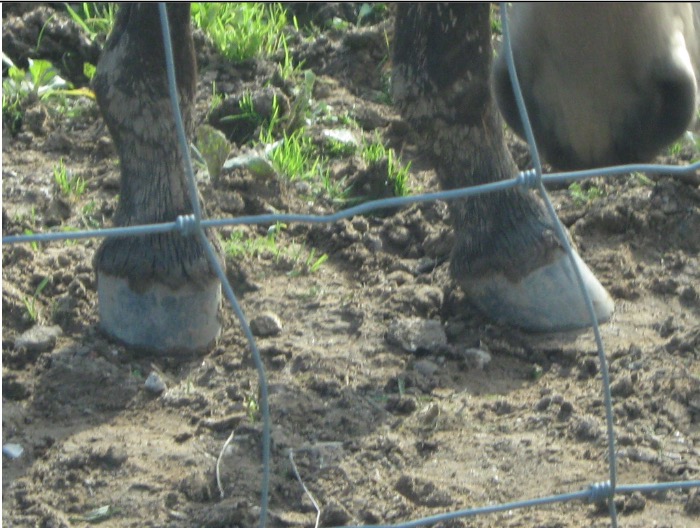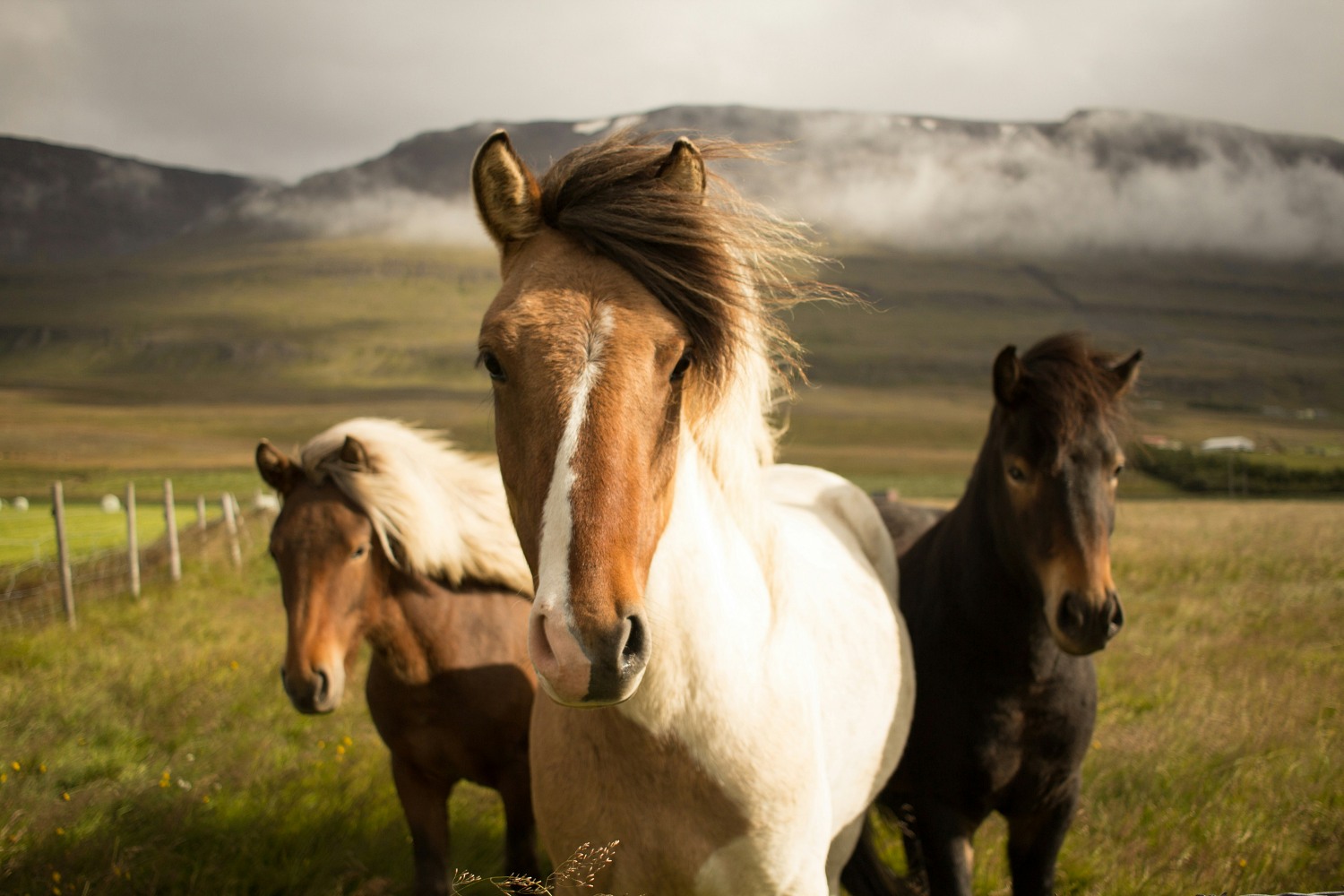At one of Wind Concerns public meetings, a woman who previously lived among wind turbines in Ontario stood up and told the crowd: “Everything you are hearing is true — the adverse health affects: headaches, dizziness, nausea… I experienced them. I also own 10 mares that I breed, and a year after the turbines went in, all of them went sterile.”
In 2021, a key study was published confirming that industrial wind turbines (IWTs) have caused a host of profound impacts on the health of animals (and humans) around the world:
Reports of adverse effects on animals located near IWTs indicate that there may be a temporal relationship between proximity to wind turbines and stress-related reactions and adverse effects on fertility, development, and reproduction. AHEs in animals that have been attributed to proximity of IWTs include reproduction and teratogenic effects in the USA,[120,121] Canada,[122,123] Denmark,[124] and Japan;[125] deformities in Portugal;[65] mortalities in Canada, France,[126,127,128,129] and Taiwan;[130,131] stress in the UK;[132] and other effects. (see original link here for footnotes).
“Wind turbines and adverse health effects: Applying Bradford Hill’s criteria for causation”, Dumbrill et al., Sept. 2021 (click link to see footnote references)
See 320 studies and counting on the adverse health impacts of turbines and infrasonic waves on animals here. The following case study republished at Advanced Biological Concepts examined deformities in horses after turbines went up in Lisbon…
A study (the Masters’ thesis of Teresa Costa e Curto at the Faculty of Veterinary Medicine, Technical University, Lisbon) reports the findings from a stud farm where 11 foals developed flexural deformities of the front limbs, after they were born.

Zircão, mother: Vassoura.) Thoroughbred
Lusitanian born and raised on Mr. R’s farm,
exhibiting a normal right hoof and pronounced
EFLD in the left limb.
At this farm, the owner has been breeding normal and physically sound horses since 2000. There were no changes in diet, exercise or any other significant alteration in management. In 2008, wind turbines were installed adjacent to the property and grazing paddocks. Since this date, a good number of foals and yearlings have developed deformities. Of the 11 animals in the study, 9 were born on the premise and 2 were brought in from another farm with different bloodlines to eliminate a possible genetic link. Both developed the deformity. One animal, when removed from the exposure, exhibited a partial recovery.
Measurements of ground vibration that were made at different distances from the wind turbines showed ground vibration at different frequencies. Research has shown that vibration affects bone metabolism. Other studies have demonstrated some cellular damage is caused by low-frequency noise.
Based on the mechanical effects on cells it was proposed that the ground vibrations were responsible for increased bone growth which was not accompanied by the muscle-tendon unit growth leading to the development of these flexural deformities. As this research project was based solely on one case study, further research is necessary in order to validate these preliminary findings and hypothesis.
Study Summary
The following is the summary of the case study “Acquired flexural deformity of the distal interphalangic joint in foals” of a group of Lusitano horses that have been monitored over 4 years which were the subject of a Masters’ thesis at the Faculty of Veterinary Medicine, Technical University, Lisbon completed in 2012.
The study was performed by Teresa Margarida Pereira Costa e Curto, ADVISOR: Dr. Maria da Conceição da Cunha and Vasconcelos Peleteiro CO-ADVISOR: Dr. Maria Luisa Jorge Mendes.
The study reports the findings from a stud where 11 foals developed flexural deformities of the front limbs after they were born. (Acquired flexural deformity of the distal interphalangeal joint).
In this stud farm, the owner has been breeding normal and physically sound horses since 2000. There were no changes in diet, exercise or any other significant alteration in management. [Then in] 2008, wind turbines were installed adjacent to the property and grazing paddocks.
Since this date, a good number of foals and yearlings have developed deformities.
The subjects of the study were:
– 11 Lusitano horses. Age between 0 and 48 months old.
– 6 males and 5 females
– 9 were born at the stud farm, 2 were acquired from a different breeder.
A foal was bought from another breeder to exclude a possible genetic link to this problem. He came to the farm at 15 days old and like the others, developed a flexural deformity.
The following tests were used for the study:
• Anamnesis
• Clinical examination
• Goniometry
• Ultrasound and x-ray
• Measurement of cortical bone
• CT
• Desmotomy of the check ligament
• Histopathology
• Sound measurements
• Measurements of Ground vibration
Measurements of ground vibration were made at different distances from the wind turbines, with the same equipment that is used to detect seismic vibrations (earthquakes). The results of these measurements showed ground vibration at different frequencies.
Research has shown that vibration affects bone metabolism.
Cellular Mechanotransduction is the mechanism by which cells convert mechanical signals into biochemical responses. Based on the mechanical effects on cells it was proposed in this research project that the ground vibrations were responsible for increased bone growth which was not accompanied by the muscle-tendon unit growth leading to the development of these flexural deformities.
Note: The above research project was based solely on this case study. Therefore, further research is necessary in order to validate these preliminary findings and hypothesis. Regarding the sound that the wind turbines produce, measurements were taken and studies have demonstrated some cellular damage is caused by low-frequency noise.
ABSTRACT
Since 2008, a high prevalence of front limb-acquired flexural deformities was observed in a Lusitano stud farm. This work aims to evaluate this problem by reporting the results from tissue alterations in the affected animals as well as environmental conditions and management changes, which could have led to this observation.
A total of eleven affected animals were studied. In these, a complete physical and orthopaedic examination were performed specifically the determination of the angle between the dorsal hoof wall and the floor. Radiographic examination, CT imaging, determination of the thickness of the cortical bone of the third metacarpian and histopathology of some tissues collected in biopsy and necropsy were done in a subset of affected foals.

Zircão, mother: Zizi.) Thoroughbred Lusitanian
born and raised on Mr. R’s farm, exhibiting a
normal left hoof and pronounced EFLD in the right
limb.
All the animals had been supplemented with balanced commercial diet for equine. To investigate a possible genetic cause, two foals from distinct bloodlines were brought to the stud. These also developed the deformities after 6 months. Two of the affected foals were placed in a pasture away from the initial one and two others were admitted at the Faculty of Veterinary Medicine of Lisbon. In those animals, except for one that had to be euthanized for humane reasons, an improvement was observed on their condition, with partial recovery of the deformity.
Histopathology was performed from (i) the tendon obtained by surgical desmotomy in one foal, (ii) tendon biopsies were performed in three foals and (iii) from the tissue of one foal during necropsy. Histologically the most significant alterations were the dissociation of myofibrils of the smooth muscle. This was predominantly seen in the small intestine but also in the walls of small capillary vessels, including those of the tendon vasculature. The flexural deformities have a complex and multifactorial etiopathogeny. They occur due to uncoupling of the longitudinal development of the bone and its adjacent soft tissues, but also from shortening of the tendon-muscle unit in response to pain.
CONCLUSION
The results presented herein strongly suggest that the presence of LFN-generating WT [wind turbine] in the vicinity of this horse breeding farm can play a significant role in the triggering and onset of equine flexural limb deformities.
“Acquired flexural deformity of the distal interphalangic joint in foals”, Costa e Curto et al., 2007
See study details and more photos here.
Wind Concerns is a collaboration of citizens of the Lakeland Alberta region against proposed wind turbine projects.



So why is this just now being circulated?
It’s not… it’s just been ignored by the mainstream media and denied by regulators.